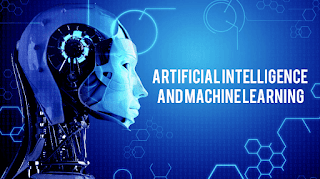Artificial Intelligence (AI) and Machine Learning (ML) are two terms that have been thrown around a lot in recent years, and for good reason. Advancements in these fields have brought about countless applications and benefits, from personalized recommendations to more efficient business operations. In this article, we will explore some of the recent advancements in AI and ML, and how they are shaping the world we live in.
Natural Language Processing
One of the most exciting areas of AI research is Natural Language Processing (NLP), which involves teaching machines to understand and interpret human language. With recent advancements in NLP, we have seen a proliferation of chatbots, voice assistants, and other conversational AI applications that can interact with humans in a more natural way.
For example, Google’s Duplex technology can make phone calls on behalf of users to schedule appointments or make reservations, and it can even carry out complex conversations that involve multiple turns and interruptions. This technology relies on a deep neural network that has been trained on massive amounts of data to understand natural language and generate responses that are both contextually relevant and linguistically correct.
Another example of NLP in action is sentiment analysis, which involves using machine learning algorithms to identify and categorize the emotional tone of text. This technology has countless applications, from helping businesses track customer sentiment to providing insight into political opinions on social media.
Computer Vision
Another area of AI research that has seen rapid advancements in recent years is Computer Vision (CV), which involves teaching machines to interpret and understand visual data. This has led to breakthroughs in fields such as self-driving cars, facial recognition, and object recognition.
For example, Tesla’s Autopilot system uses a combination of cameras, radar, and machine learning algorithms to interpret visual data and make decisions about how to drive the car. The system can detect and track other vehicles, pedestrians, and even road markings, and it can make split-second decisions about how to respond to changing driving conditions.
CV technology has also been used to develop facial recognition systems that can identify individuals based on their unique facial features. While this technology has many potential applications, it has also raised concerns about privacy and civil liberties, as it can be used for surveillance and tracking.
Reinforcement Learning
Reinforcement Learning (RL) is a type of machine learning that involves training agents to make decisions based on trial and error. RL has been used to create game-playing algorithms that can beat human experts at games like chess, Go, and poker, as well as to optimize complex systems such as supply chains and energy grids.
One notable recent development in RL is the creation of AlphaGo Zero, an AI system developed by DeepMind that taught itself how to play the game of Go from scratch, without any prior knowledge or human guidance. The system was able to beat the previous version of AlphaGo, which had been trained on a database of human games, by using RL to learn from its own mistakes and continuously improve its gameplay.
RL has also been used to optimize resource allocation in complex systems, such as in the case of Google’s DeepMind, which used RL to optimize the cooling system in its data centers, resulting in a 40% reduction in energy usage.
Conclusion
AI and ML are rapidly evolving fields that are transforming the way we interact with technology and each other. From conversational AI to self-driving cars, these technologies are changing the way we live and work, and there is no doubt that we will continue to see exciting advancements in the years to come. However, with these advancements come new challenges and ethical considerations, such as privacy, bias, and accountability. As AI and ML become more integrated into our daily lives, it will be important to carefully consider the implications of these technologies and ensure that they are developed and used responsibly.
Thank you for visiting here my friend.

Comments
Post a Comment